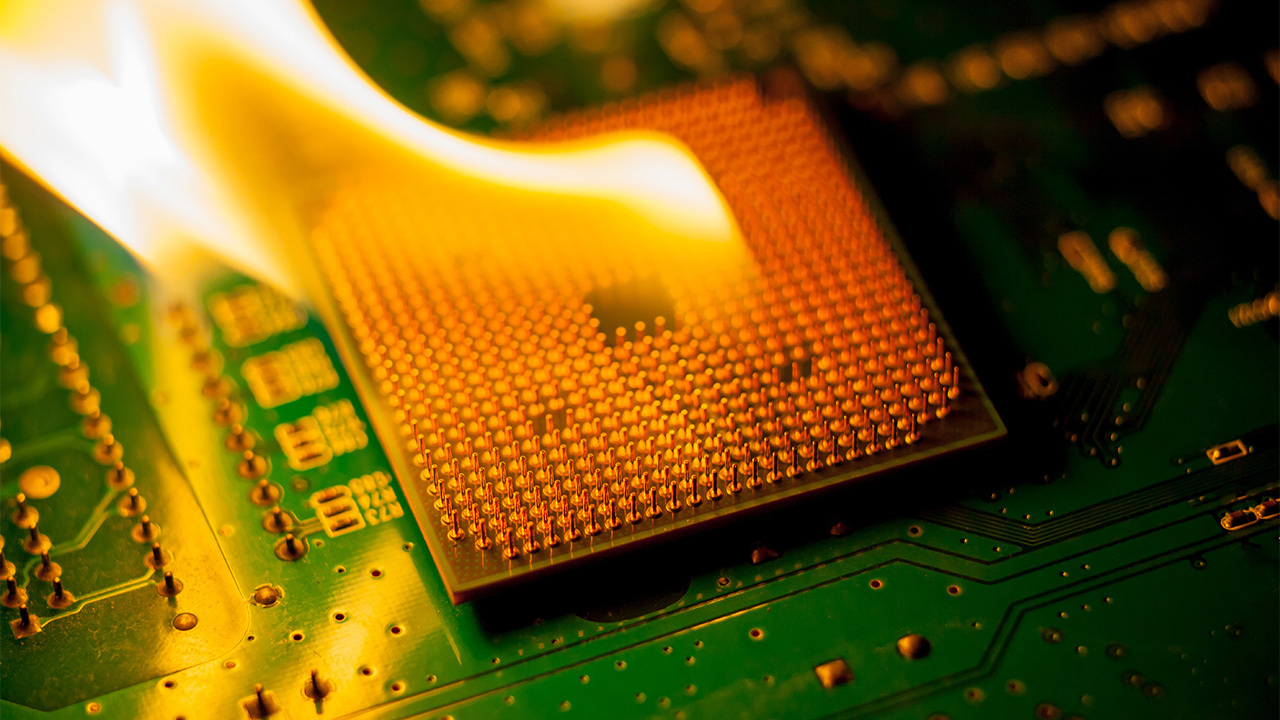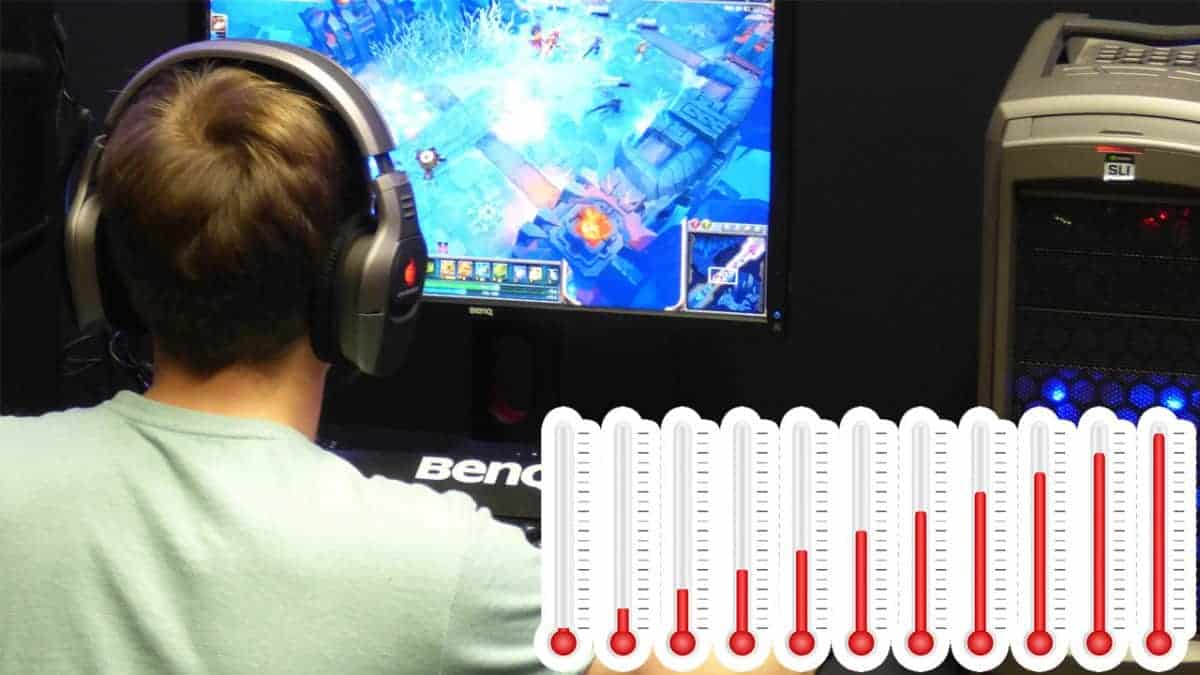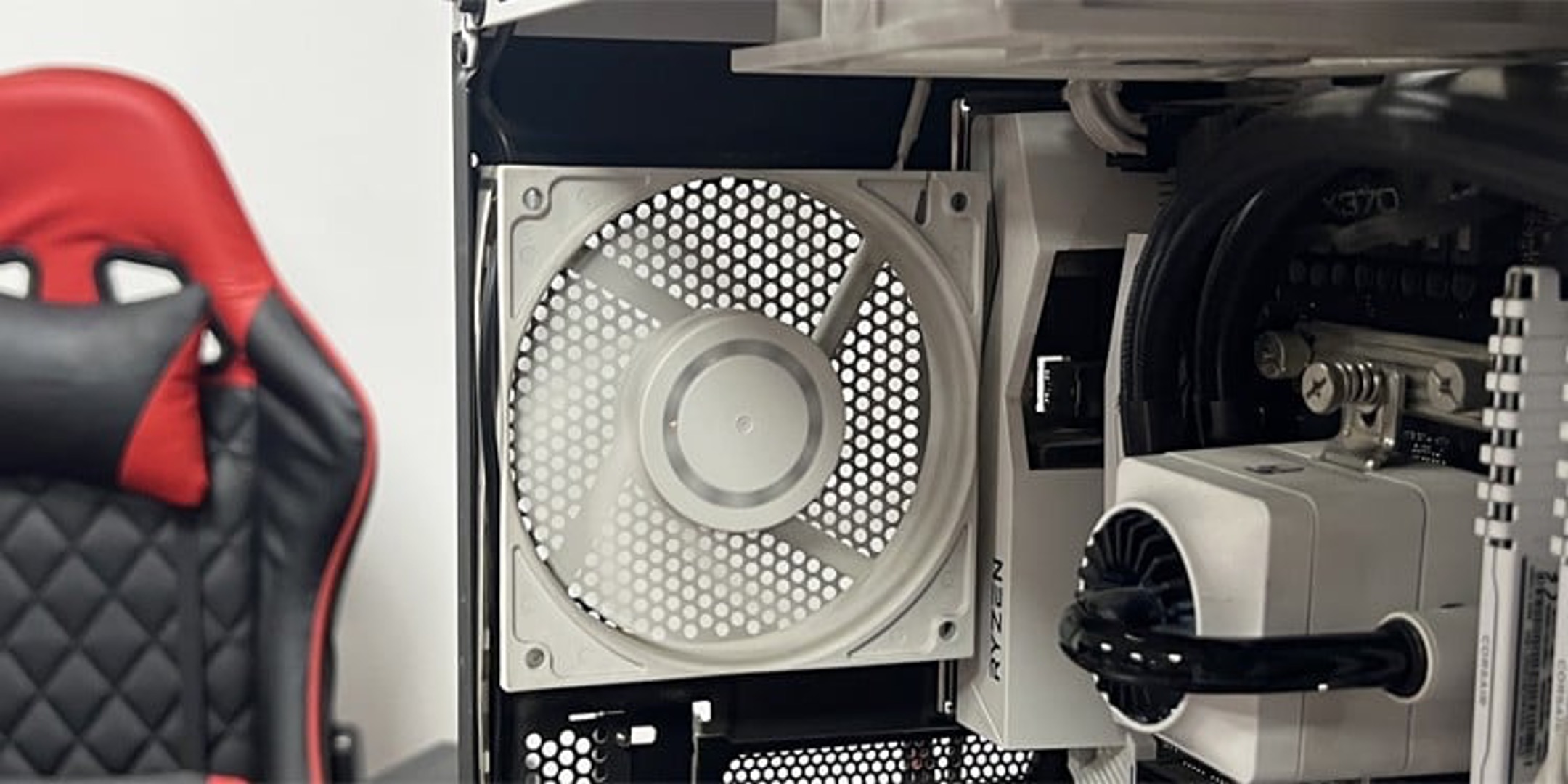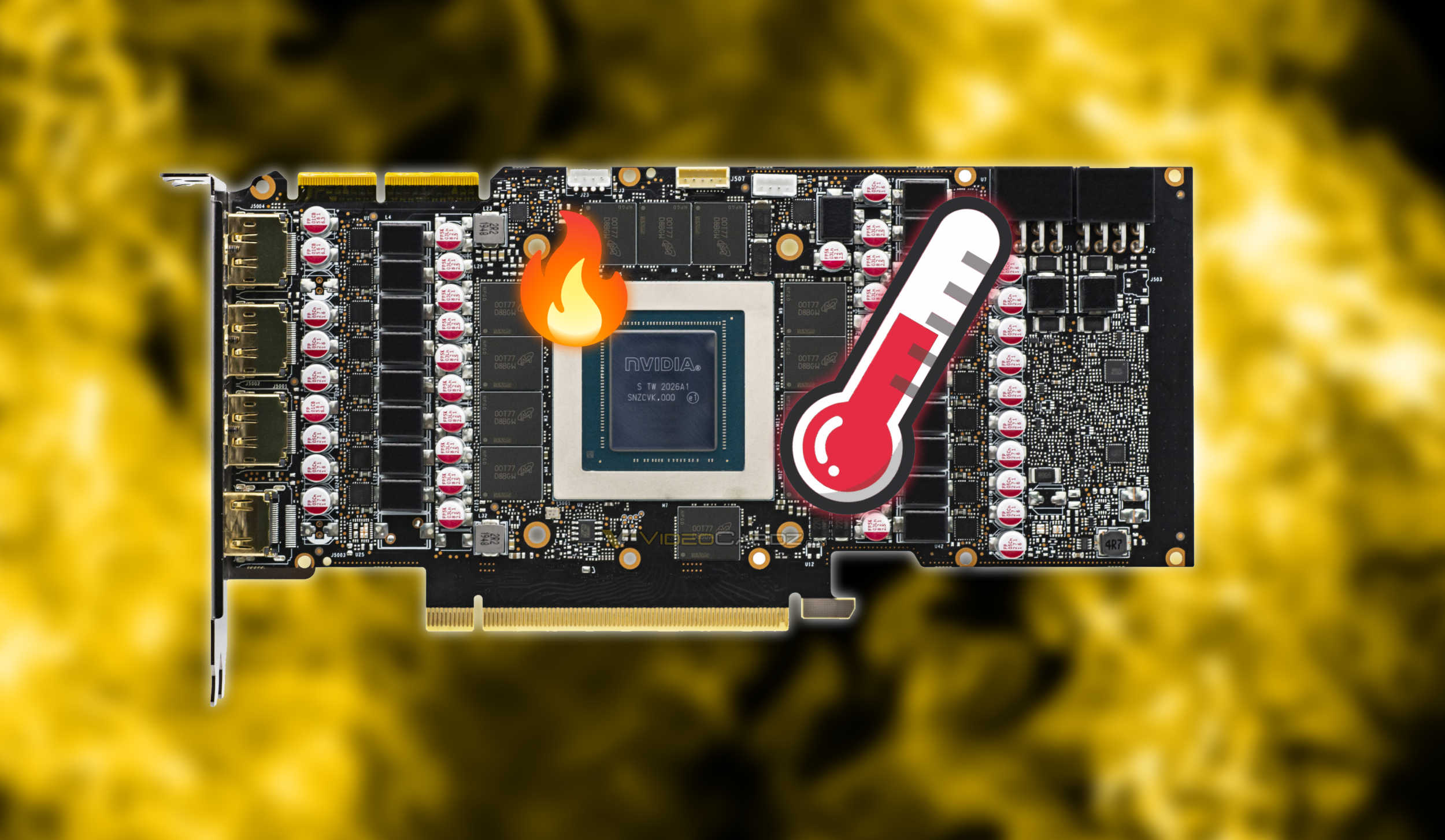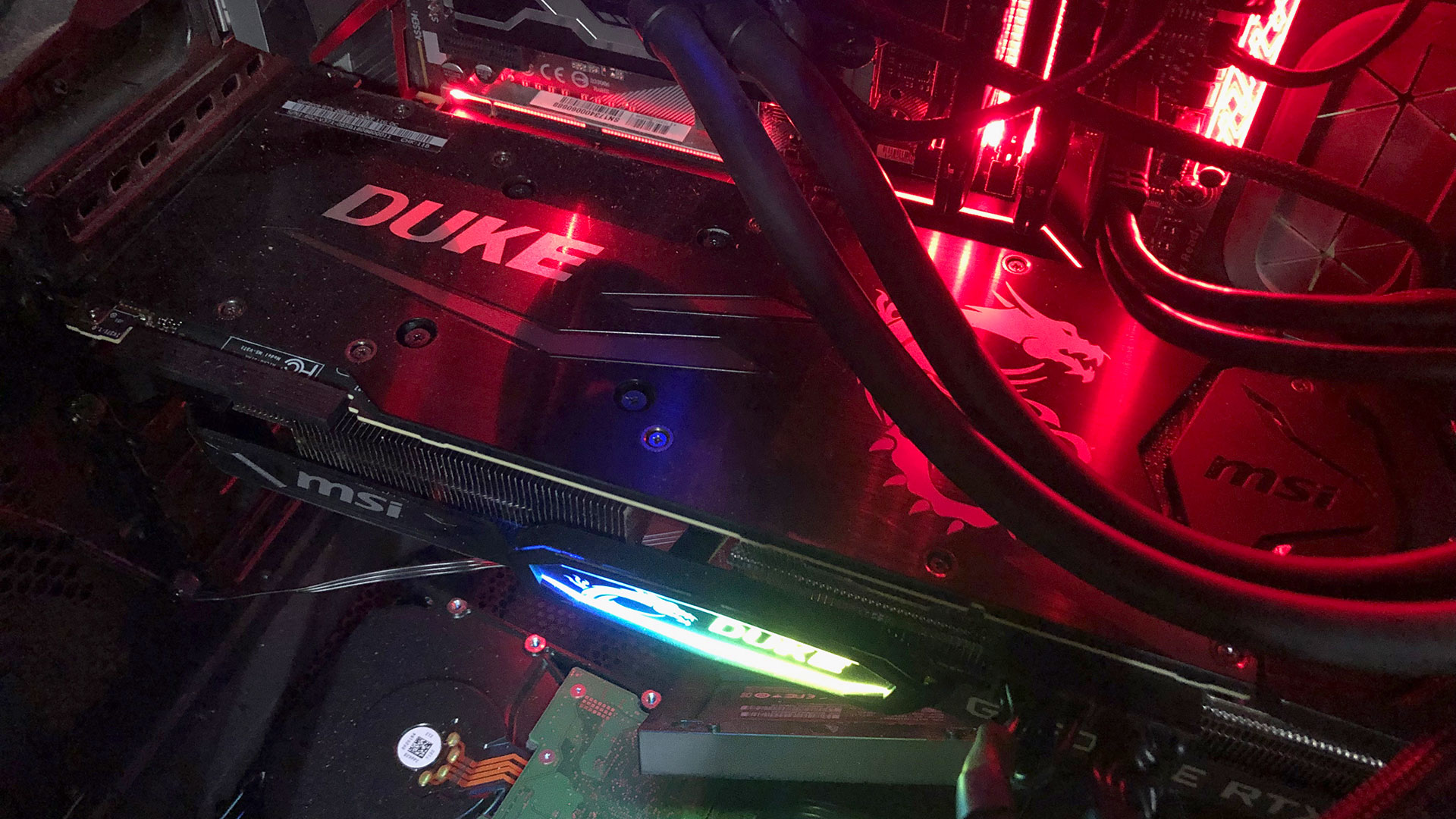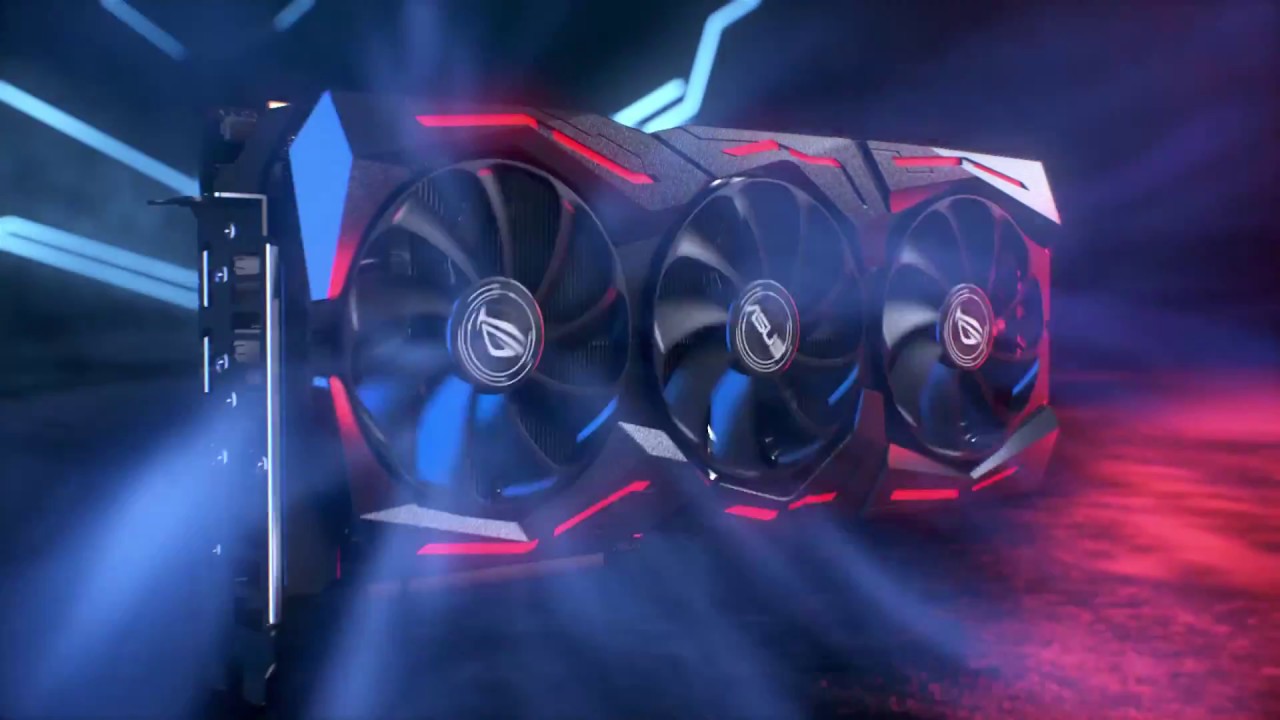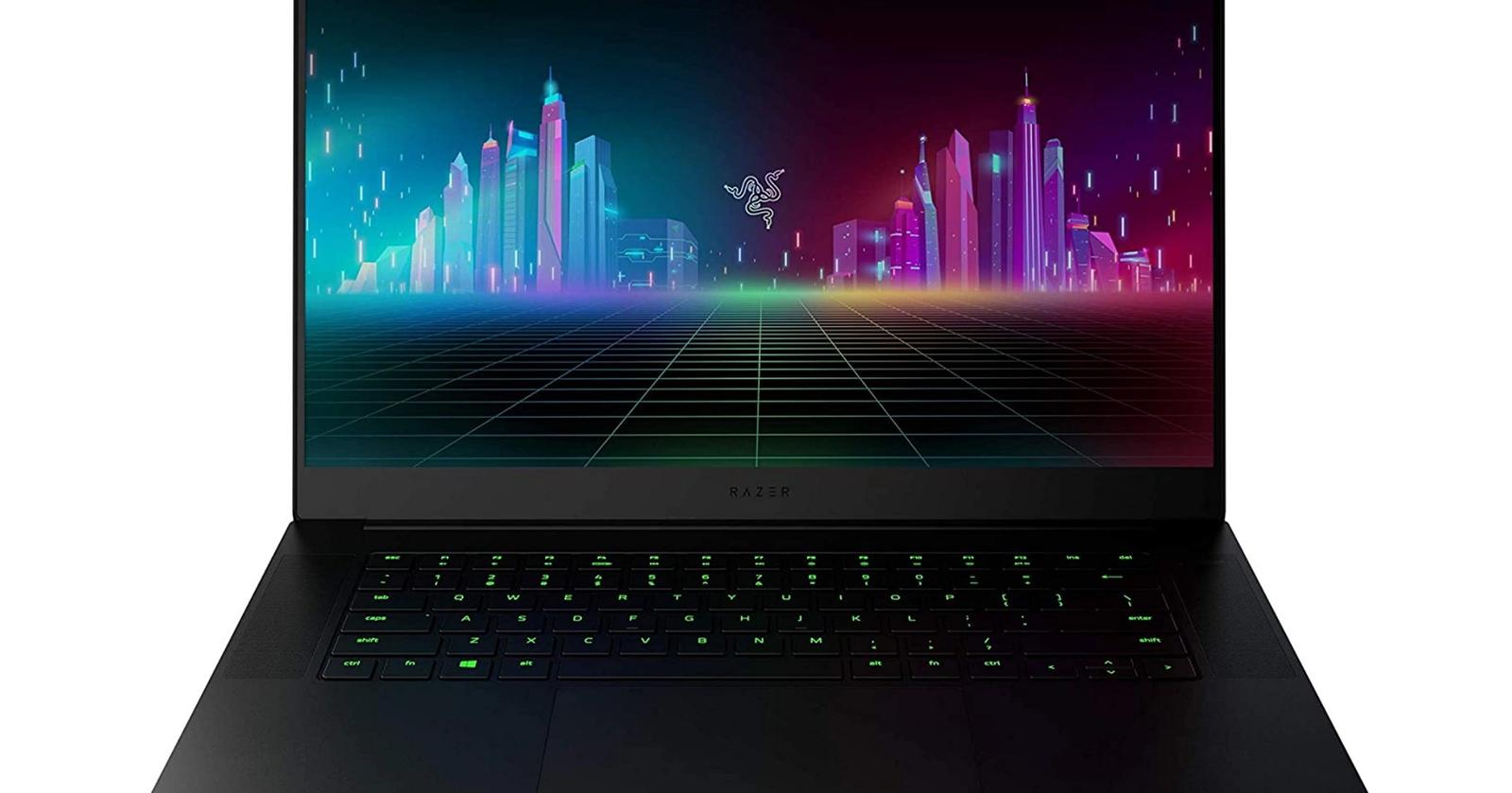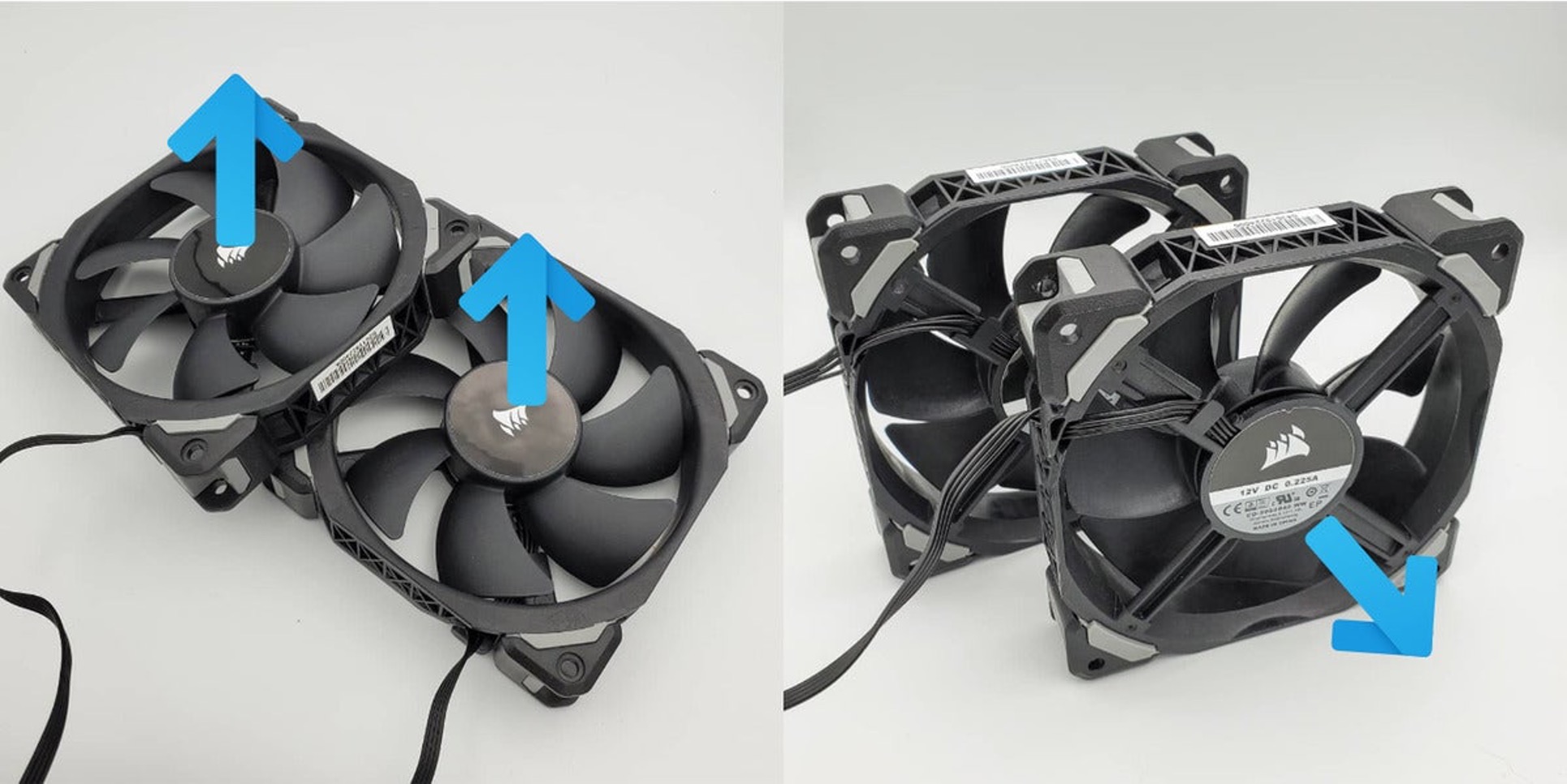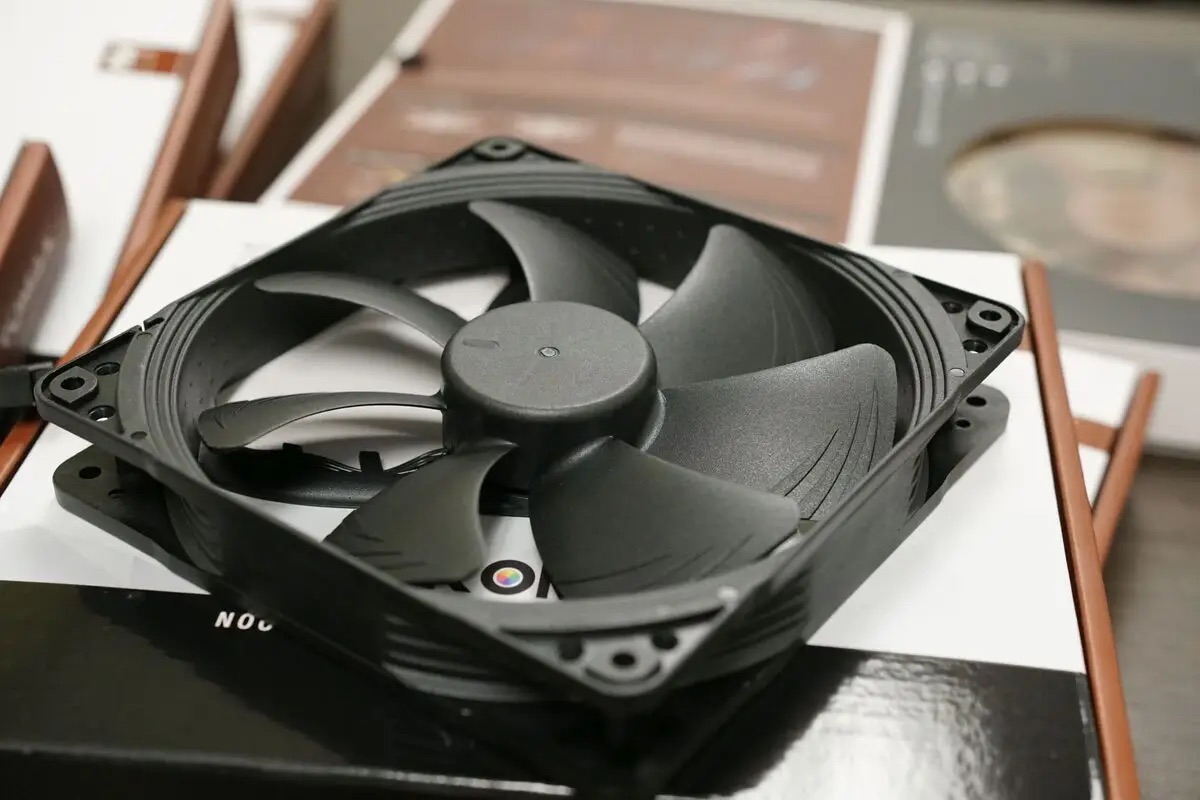Introduction
Welcome to the world of graphics processing units, or GPUs. Whether you’re a gamer, a cryptocurrency miner, or a graphic designer, you rely on your GPU to handle the complex calculations and render the high-quality graphics you demand. However, you may have noticed that your GPU tends to get hot during extended periods of use. In this article, we will explore the reasons behind this phenomenon and discuss the importance of keeping your GPU cool.
Before delving into the causes of GPU overheating, let’s first clarify what a GPU is. A graphics processing unit, or GPU, is a specialized electronic circuitry primarily designed to handle and accelerate the creation and rendering of images, videos, and animations. Unlike a central processing unit (CPU), which is a general-purpose processor, a GPU is specifically optimized for parallel processing tasks related to graphics and visual computing.
Now that we have a basic understanding of what a GPU is and what it does, let’s dive into the intricacies of how a GPU works. GPUs are composed of thousands, or even tens of thousands, of smaller processing units called cores. These cores work in parallel to perform calculations and execute complex algorithms required for rendering high-resolution images and running computer-intensive applications.
As these cores work tirelessly to handle the extensive graphics processing, they generate a significant amount of heat. This heat needs to be dissipated efficiently in order to prevent the GPU from overheating, which can cause performance issues and even permanent damage. Understanding the factors that contribute to GPU heat is essential for maintaining optimal performance and longevity.
Before we explore the common reasons why a GPU gets hot, let’s take a moment to understand the importance of good ventilation. Proper airflow within your computer’s case is crucial for dissipating heat and keeping all components, including the GPU, at a safe operating temperature. Without adequate ventilation, heat can build up inside the case and significantly increase the temperature of your GPU.
Now that we have covered the basics, let’s dive into the factors that contribute to GPU heat and the common reasons behind it. Understanding these causes will help you take the necessary steps to keep your GPU cool and avoid any potential risks associated with high temperatures.
What is a GPU?
A graphics processing unit, commonly known as a GPU, is a specialized electronic circuit designed to handle and accelerate the creation and rendering of visual data, such as images, videos, and animations. Unlike a central processing unit (CPU), which is a general-purpose processor, a GPU is specifically optimized for parallel processing tasks related to graphics and visual computing.
At the heart of a GPU are thousands, or even tens of thousands, of smaller processing units known as cores. These cores work together in parallel to perform calculations and execute complex algorithms required for rendering high-resolution graphics and running computationally intensive applications.
The parallel processing architecture of a GPU allows it to handle massive amounts of data simultaneously, making it ideal for tasks that require complex mathematical operations, such as 3D rendering, video encoding and decoding, and machine learning. GPUs can process a multitude of instructions in parallel, which significantly speeds up the rendering process and boosts overall system performance.
Over the years, GPUs have evolved and become more powerful, offering better performance and enhanced visual fidelity. GPUs are not only utilized in gaming and entertainment but have also found extensive applications in fields like scientific research, artificial intelligence, virtual reality, and cryptocurrency mining.
One notable feature of GPUs is their ability to execute instructions in a highly parallel manner, meaning that they can perform multiple calculations simultaneously. This parallelism allows GPUs to handle complex graphics rendering tasks faster and more efficiently than CPUs, which excel in sequential processing.
GPUs are tightly integrated with the software they interact with. Graphics APIs, such as OpenGL and DirectX, provide the necessary interface for developers to access and utilize the processing power of the GPU to render graphics and accelerate computations. GPU drivers play a crucial role in ensuring compatibility and optimal performance by facilitating communication between the GPU and the operating system.
In summary, a GPU is a specialized processor designed to handle and accelerate the creation and rendering of visual data. With their highly parallel architecture and immense processing power, GPUs have revolutionized the gaming industry, advanced scientific research, and opened up new possibilities in various fields that require complex visual computing tasks.
How does a GPU work?
A graphics processing unit (GPU) works by leveraging parallel processing to efficiently handle and accelerate the creation and rendering of visual data. GPUs are composed of thousands, or even tens of thousands, of smaller processing units known as cores. These cores work in parallel to perform calculations and execute complex algorithms required for rendering high-resolution images and running computationally intensive applications.
When a computer sends a command to the GPU to render a graphic, the GPU divides the task into multiple smaller tasks and assigns them to different cores. Each core then works simultaneously on its assigned task, executing the required calculations and computations. This parallel processing approach allows the GPU to handle large amounts of data simultaneously, significantly speeding up the rendering process.
The cores in a GPU are organized into clusters, and each cluster consists of several cores sharing a control unit. This hierarchical structure allows for better control and coordination of the processing units. The control unit manages the flow of data and instructions between the CPU and the GPU, ensuring that the GPU executes the required tasks efficiently.
In addition to the processing cores, a GPU also includes memory specifically designed to store and access the data required for graphics processing. This includes dedicated video memory known as VRAM, which is faster and more specialized than the system memory (RAM) used by the CPU. The VRAM stores the textures, shaders, and other data necessary for rendering high-quality images and videos.
Graphics APIs, such as OpenGL and DirectX, play a crucial role in the communication between software applications and the GPU. These APIs provide a standardized interface that allows developers to access the functionality and processing power of the GPU. Through APIs, developers can issue commands to the GPU, specifying the desired graphics effects, textures, and other parameters required for rendering.
GPUs are capable of executing complex mathematical operations, including matrix calculations and vector operations, with high precision and speed. This makes them well-suited for a wide range of applications, from gaming and entertainment to scientific simulations and deep learning algorithms.
As technology advances, GPUs continue to evolve, providing more power and performance for demanding graphics processing tasks. Modern GPUs incorporate advanced features, such as ray tracing, which simulate the behavior of light to create more realistic lighting and shadows in rendered scenes. Additionally, GPU manufacturers continually optimize their drivers and software to ensure compatibility, stability, and high performance.
In summary, a GPU harnesses the power of parallel processing to efficiently handle and accelerate the creation and rendering of visual data. By dividing tasks into smaller subtasks and executing them simultaneously across multiple processing cores, GPUs deliver fast and efficient graphics processing, fueling the demand for visually stunning games, graphics-intensive applications, and cutting-edge technologies.
Factors that contribute to GPU heat
There are several factors that can contribute to the heat generated by a graphics processing unit (GPU). Understanding these factors is vital for effectively managing and cooling your GPU to prevent overheating and ensure optimal performance. Let’s explore the main contributors to GPU heat:
- Core Clock Speed: The core clock speed of a GPU determines how fast the cores can process data. Higher clock speeds result in faster processing, but they also generate more heat. Overclocking, which involves running the GPU at a higher clock speed than its default setting, can significantly increase GPU heat output.
- Workload Intensity: GPU usage and workload intensity play a significant role in heat generation. Running graphics-intensive applications such as games, 3D modeling software, or video editing programs can put a heavy load on the GPU, causing it to generate more heat.
- Number of Active Cores: The more cores that are actively running calculations, the more heat the GPU will produce. When intense workloads are applied, it is common for the GPU to activate more cores to handle the increased demand, resulting in higher temperatures.
- Voltage: GPU voltage defines the amount of electrical power supplied to the GPU for operation. Higher voltages are often necessary to support overclocking or increased performance, but they also lead to higher heat output. Adjusting voltage levels should be done with caution, as improper settings can damage the GPU.
- Thermal Design Power (TDP): The TDP rating of a GPU is a measure of the maximum amount of heat it is designed to dissipate. GPUs with higher TDP ratings typically generate more heat during operation. Overloading the GPU beyond its specified TDP can result in excessive heat buildup and potential damage.
- Cooling Solution: The cooling solution employed on a GPU has a direct impact on its heat dissipation capabilities. The most common methods include active cooling with fans or liquid cooling solutions. An inadequate cooling system can impede the GPU’s ability to dissipate heat efficiently, causing temperatures to rise significantly.
- Case Ventilation: The overall airflow and ventilation within your computer case also play a crucial role in GPU heat management. If the case has poor airflow or is filled with dust, heat can become trapped inside, including the heat generated by the GPU. Proper case ventilation, including intake and exhaust fans, can help maintain lower GPU temperatures.
It’s important to note that each GPU model and manufacturer may have specific characteristics that influence heat generation. Some GPUs may naturally run hotter than others, so it’s essential to check the specifications and guidelines provided by the manufacturer for optimal operating temperatures and cooling solutions.
By understanding these factors, you can take proactive measures to mitigate GPU heat buildup and maintain a cool operating temperature. This not only ensures optimal performance but also extends the lifespan of your GPU and reduces the risk of system instability or failure due to overheating.
Common reasons why a GPU gets hot
A graphics processing unit (GPU) can get hot for various reasons. Understanding these common causes is crucial for effectively managing heat and preventing potential issues. Let’s explore some of the main reasons why GPUs tend to heat up:
- High Workload: Running graphics-intensive applications, such as modern games or resource-demanding software, places a heavy load on the GPU. The increased workload results in higher power consumption and heat generation, causing the GPU temperature to rise.
- Insufficient Cooling: Inadequate cooling is a common reason for GPU overheating. If the GPU cooling system, typically comprised of fans or a liquid cooling solution, is not functioning optimally or is clogged with dust, heat dissipation becomes inefficient, leading to higher GPU temperatures.
- Overclocking: Overclocking, the process of running a GPU at higher-than-default clock speeds, can significantly increase performance but also raises the temperature. Overclocking causes the GPU to work harder, generating more heat than it would at its stock settings.
- Insufficient Ventilation: The overall ventilation within the computer case plays a crucial role in GPU temperature management. If the case lacks proper airflow or does not have enough case fans, hot air can accumulate around the GPU, leading to increased temperatures.
- Dust Accumulation: Over time, dust and debris can build up inside the GPU and its cooling components, hindering heat dissipation. This accumulation restricts airflow and insulates the GPU, causing it to operate at higher temperatures. Regular cleaning and maintenance can alleviate this issue.
- Thermal Paste Deterioration: Thermal paste is used to improve heat transfer between the GPU and its cooling solution. Over time, the thermal paste can degrade, resulting in poor thermal conductivity and reduced efficiency in dissipating heat. Replacing the thermal paste can help address this problem.
- Faulty GPU Fan: If the GPU fan malfunctions or stops working altogether, the airflow needed for heat dissipation is severely compromised. This can quickly lead to overheating. Regularly inspecting the GPU fan and addressing any issues promptly is essential for maintaining optimal temperatures.
It is important to note that the severity of GPU heat largely depends on the combination of these factors, as well as the specific GPU model and its cooling capabilities. Monitoring GPU temperatures using software utilities or hardware monitoring tools can provide valuable insights into the actual temperature levels and help identify potential issues.
By addressing these common causes of GPU heat, such as ensuring proper cooling, adequate ventilation, and regular maintenance, you can effectively manage the temperature and safeguard your GPU from potential damage or performance degradation.
The importance of good ventilation
Good ventilation is vital for maintaining optimal performance and preventing heat buildup in your computer system, especially when it comes to the graphics processing unit (GPU). Proper airflow within your computer’s case directly affects the temperature of components, including the GPU. Let’s explore why good ventilation is essential:
Heat Dissipation: When the GPU and other components generate heat during operation, it must be effectively dissipated to prevent overheating. Adequate ventilation ensures a constant flow of cool air into the case, which helps carry away the heat generated by the GPU. Without good airflow, heat can accumulate, leading to increased temperatures and potential performance issues.
Lower Temperatures: A well-ventilated case helps maintain lower temperatures for all components, including the GPU. High operating temperatures can cause thermal throttling, a mechanism that reduces or limits the performance of the GPU to prevent damage. By providing good airflow, the GPU can operate at lower temperatures, maintaining optimal performance levels.
Preventing Dust Buildup: Efficient ventilation also helps mitigate the buildup of dust and debris inside the case and on the GPU itself. Dust accumulation on the GPU’s cooling components, such as fans and heat sinks, can hinder heat dissipation and increase temperatures. Good airflow helps prevent dust from settling, keeping the components cleaner and reducing the risk of overheating.
Stability and Reliability: Heat can negatively impact the stability and reliability of your GPU and the entire computer system. Excessive heat can cause components to become unstable, leading to system crashes, freezes, or unexpected shutdowns. By ensuring good ventilation, you create a stable environment, improving the overall reliability of your system.
Noise Reduction: Proper ventilation can help reduce the noise levels generated by the cooling fans in your computer. When the fans are functioning optimally and airflow is adequate, they don’t need to spin at high speeds, resulting in quieter operation. This can contribute to a more comfortable and enjoyable computing experience.
To achieve good ventilation, consider the following tips:
- Case Fans: Install case fans strategically to ensure proper intake and exhaust of air. Intake fans bring cool air into the case, while exhaust fans expel hot air. Placing fans near the GPU can help direct cool air towards it and promote heat dissipation.
- Cable Management: Proper cable management inside the case can improve airflow, prevent cables from obstructing the GPU or fans, and promote better heat dissipation.
- Dust Management: Regularly clean the case and components to remove dust and debris that can obstruct airflow. Use compressed air or suitable cleaning tools to safely clean the GPU and its cooling components.
- Proper Placement: Position the case in a well-ventilated area with enough clearance from walls or obstructions. This allows for better air circulation around the case and ensures that the expelled hot air has sufficient room to dissipate.
By prioritizing good ventilation and implementing these practices, you can maintain lower GPU temperatures, improve performance, and prolong the lifespan of your components. Remember, a cooler GPU leads to a smoother computing experience and reduces the risk of potential hardware damage caused by overheating.
Understanding thermal throttling
Thermal throttling is a mechanism employed by graphics processing units (GPUs) and other components to protect themselves from overheating. When a GPU reaches a certain temperature threshold, it automatically reduces its clock speed or performance to dissipate heat and prevent damage. Let’s delve deeper into the concept of thermal throttling and its implications:
Temperature Threshold: Each GPU model has a designated temperature threshold, typically specified by the manufacturer. When the GPU temperature exceeds this threshold, it triggers the thermal throttling mechanism. This threshold is set to a level that ensures the GPU operates within safe temperature limits.
Performance Reduction: When thermal throttling is activated, the GPU reduces its clock speed or performance, limiting its processing power. This reduction in clock speed helps decrease the heat generated, giving the cooling system a chance to catch up and dissipate the excess heat. As a result, the GPU operates at a lower temperature to prevent overheating.
Effects on Performance: While thermal throttling aims to protect the GPU from overheating, it can also impact performance. When the GPU is throttled, its processing power is reduced, potentially leading to lower frame rates, slower rendering times, and decreased overall performance. This can be especially noticeable in graphics-intensive applications and gaming scenarios.
Factors Affecting Throttling: The factors that influence thermal throttling can vary depending on the specific GPU model and its cooling capabilities. These factors include ambient temperature, system airflow, thermal design power (TDP), and the efficiency of the GPU’s cooling solution. Inadequate cooling or overclocking can increase the likelihood of thermal throttling occurring.
Monitoring and Adjustments: Monitoring GPU temperatures using software utilities or hardware monitoring tools is essential to understand when thermal throttling might be occurring. By observing the temperatures and clock speeds, you can identify cases of throttling and adjust your cooling solution or system configuration accordingly.
Importance of Cooling: Keeping your GPU cool is crucial to prevent or minimize thermal throttling. Proper cooling involves ensuring good ventilation, using efficient cooling solutions such as fans or liquid cooling, and regularly cleaning the GPU and its cooling components to remove dust and debris that can impede heat dissipation.
Overclocking Considerations: Overclocking your GPU increases its clock speed, resulting in higher heat generation. Overclocked GPUs are more likely to experience thermal throttling, as the increased clock speed puts additional strain on the cooling system. If you choose to overclock your GPU, proper cooling is even more crucial to avoid excessive heat buildup.
Understanding thermal throttling and its implications can help in managing your GPU’s temperature and performance more effectively. By ensuring a well-ventilated and adequately cooled system, you can minimize the likelihood of thermal throttling occurring and maintain optimal performance during demanding tasks or extended gaming sessions.
Risks of high GPU temperatures
High temperatures can pose several risks to the graphics processing unit (GPU) and the overall stability and performance of your computer system. Understanding these risks is essential for preventing potential damage and ensuring the longevity of your GPU. Let’s explore the dangers associated with high GPU temperatures:
Reduced Performance: When a GPU operates at high temperatures, it may enter a thermal throttling mode to protect itself from overheating. Thermal throttling reduces the clock speed or performance of the GPU to dissipate heat. As a result, you may experience lower frame rates, slower rendering times, and decreased overall performance in graphics-intensive applications and games.
System Instability: High GPU temperatures can lead to system instability, causing crashes, freezes, or unexpected shutdowns. Overheating can affect the stability of not only the GPU but also other components within the system. Excessive heat can disrupt the normal operation of the computer, leading to a loss of work, data corruption, or even hardware failure.
Reduced Lifespan: Consistently running a GPU at high temperatures can significantly shorten its lifespan. Heat is a major contributing factor to component degradation over time. Prolonged exposure to high temperatures can lead to the deterioration of solder joints, capacitors, and other sensitive electronic components, potentially resulting in permanent damage and the need for costly repairs or replacements.
Increased Power Consumption: When a GPU operates under higher temperatures, it requires more power to maintain its functionality. This increased power consumption not only contributes to higher electricity costs but also puts more strain on the power delivery system of the computer. Over time, the increased power demand can lead to component wear and decreased system efficiency.
Risk of Data Loss: High GPU temperatures can lead to data loss or corruption. If the system crashes or shuts down unexpectedly due to overheating, any unsaved work or data in progress can be lost. Frequent overheating incidents can also increase the likelihood of file system errors or damage to storage devices, causing data loss or the need for data recovery efforts.
Potential Component Damage: Operating a GPU at excessively high temperatures for extended periods can cause permanent damage to the GPU and other nearby components. Overheating can affect not only the immediate functionality of the GPU but also surrounding components such as memory modules, VRMs (voltage regulator modules), or the motherboard itself. This can lead to costly repairs or the need for complete system replacements.
To mitigate these risks, it is crucial to prioritize proper cooling and ventilation for your GPU. Ensuring adequate airflow within your computer’s case, regularly cleaning dust buildup, employing efficient cooling solutions, and monitoring temperatures can help maintain safe operating temperatures, prevent performance degradation, and significantly extend the lifespan of your GPU.
Tips for keeping your GPU cool
Keeping your graphics processing unit (GPU) cool is essential for maintaining optimal performance and preventing potential damage or performance issues. Fortunately, several tips and best practices can help you maintain lower GPU temperatures. Let’s explore some effective ways to keep your GPU cool:
- Ensure Adequate Ventilation: Proper ventilation is crucial for proper heat dissipation. Ensure that your computer case has sufficient airflow by using case fans and ensuring proper placement of the case to allow for optimal air circulation.
- Clean Dust Regularly: Dust accumulation can hinder airflow and hinder heat dissipation, leading to higher GPU temperatures. Regularly clean your computer case, including the GPU and its cooling components, to remove dust and debris. Use compressed air or suitable cleaning tools for effective removal.
- Use Efficient Cooling Solutions: Consider using effective cooling solutions for your GPU. This may include high-performance aftermarket coolers, liquid cooling systems, or upgrading to a graphics card with improved cooling capabilities.
- Manage Cable Placement: Proper cable management inside your computer case can help improve airflow and prevent cables from obstructing the GPU or cooling components. Neatly organize and route cables to promote unobstructed airflow.
- Avoid Overclocking: Overclocking your GPU increases its clock speed and generates more heat. If you want to maintain lower GPU temperatures, avoid excessive overclocking or ensure that you have adequate cooling solutions in place to handle the increased heat output.
- Monitor Temperatures: Use software utilities or hardware monitoring tools to monitor your GPU temperatures. Keeping an eye on the temperature readings can help you identify potential issues and take necessary action if temperatures rise too high.
- Consider Fan Speed Optimization: Adjusting fan speeds can help strike a balance between cooling and noise levels. Increase fan speeds during intense gaming or graphic-intensive tasks and lower them during idle or less demanding periods.
- Manage Ambient Temperature: Ensure that your computer is located in a well-ventilated area and away from sources of heat. Avoid placing it near radiators, direct sunlight, or other heat-generating devices.
- Consider Underclocking: Underclocking your GPU can reduce its power consumption and heat output. This can be done through software utilities or graphics card control panels, but it is advised to research and understand the process before making any modifications.
- Regular Maintenance: Perform regular maintenance checks on your GPU, including inspecting the fans, cleaning dust, replacing thermal paste, and ensuring that the cooling system is working optimally.
Implementing these tips and best practices will help you maintain lower GPU temperatures, prolong the lifespan of your GPU, and ensure optimal performance. Remember that every GPU model and system configuration may have specific requirements, so it’s essential to consider the specific recommendations from the GPU manufacturer and adjust your cooling strategies accordingly.
Conclusion
Understanding how to keep your graphics processing unit (GPU) cool is crucial for maintaining optimal performance, preventing overheating, and ensuring the longevity of your GPU. By implementing the tips and best practices discussed in this article, you can effectively manage GPU temperatures and minimize the risks associated with high heat levels.
Proper ventilation and airflow within your computer case are essential. Ensure that your case has adequate intake and exhaust fans to facilitate the exchange of hot and cool air. Regularly clean your case to prevent dust buildup, which can obstruct airflow and hinder heat dissipation.
Investing in efficient cooling solutions, such as aftermarket GPU coolers or liquid cooling systems, can significantly improve heat dissipation and keep GPU temperatures in check. Proper placement of cables and organized cable management can also enhance airflow and prevent obstruction of the GPU and its cooling components.
Avoid excessive GPU overclocking, as it can lead to higher heat output. If you choose to overclock, ensure that you have suitable cooling solutions in place to handle the increased thermal load. Monitor GPU temperatures using software utilities or hardware monitoring tools to detect any potential overheating issues and take necessary action promptly.
Remember to maintain a suitable ambient temperature by keeping your computer away from heat sources and ensuring proper ventilation in the room. Consider underclocking if heat remains a persistent issue, but research and understand the process before making any modifications.
Regular maintenance, including inspecting the fans, cleaning dust, replacing thermal paste, and ensuring the cooling system’s efficiency, is crucial for optimal GPU performance and longevity.
By implementing these tips and best practices, you can maintain lower GPU temperatures, improve system stability, and reduce the risks of performance degradation and hardware damage associated with high heat levels. Prioritizing cooling and ventilation will enhance your computing experience and ensure that your GPU operates optimally for years to come.







